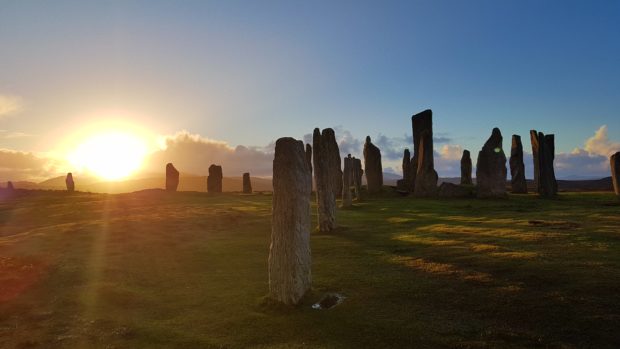New evidence of a massive lightning strike at the centre of a hidden stone circle in the Western Isles could shed light on the mystery of why such monuments were created.
The Calanais Standing Stones on the isle of Lewis were erected 5,000 years ago.
Now, geophysics surveys have revealed that a nearby single standing stone on an exposed hillside overlooking the great circle was once part of a circle of standing stones.
At the centre of that circle, a massive, star-shaped magnetic form has been discovered. Archaeologists say it was either the result of one large lighting strike or many smaller strikes on the same spot, around 3,000 years ago.
Experts involved with the Calanais Virtual Reconstruction Project, a joint venture led by St Andrews University with the Urras nan Tursachan (a Calanais-based charitable trust) and Bradford University, believe this shows a potential link between ancient stone circles and the forces of nature.
Project leader Dr Richard Bates, of the School of Earth and Environmental Sciences at St Andrews, said: “Such clear evidence for lightning strikes is extremely rare in the UK and the association with this stone circle is unlikely to be coincidental.
“Whether the lightning at Site XI focused on a tree or rock which is no longer there, or the monument itself attracted strikes, is uncertain.
“However, this remarkable evidence suggests that the forces of nature could have been intimately linked with everyday life and beliefs of the early farming communities on the island.”
The researchers also virtually re-created another nearby circle, with the help of the Smart History team based at the St Andrews School of Computer Science, which had been lost with its stones either buried or lying flat.
Known as Na Dromannan, careful scanning of the stones allowed a full 3D model to be built allowing the passage of the sun and moon around this circle to be tracked for the first time in four millennia.
Dr Bates added: “For the first time in over 4,000 years, the stones can now be seen and ‘virtually’ walked around.”
Dr Tim Raub, of the School of Earth and Environmental Sciences at St Andrews, added: “The clarity of the strike suggests we are looking at events before the peat enveloped the site, more than 3,000 years ago.”
Dr Alison Sheridan, Director of Urras nan Tursachan, said that the modelling of Na Dromannan will help them investigate whether this circle was astronomically aligned.
